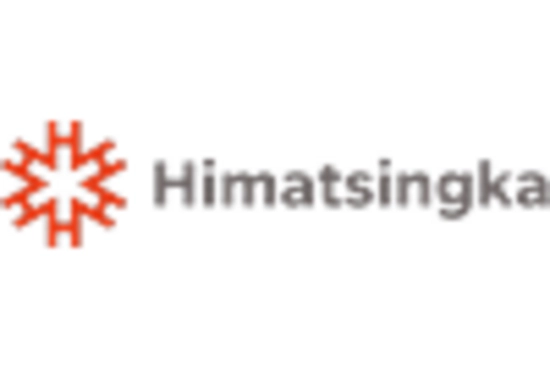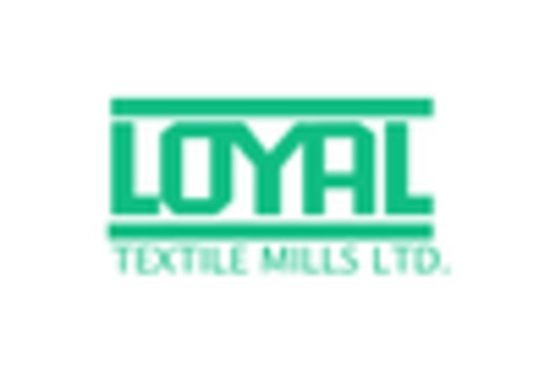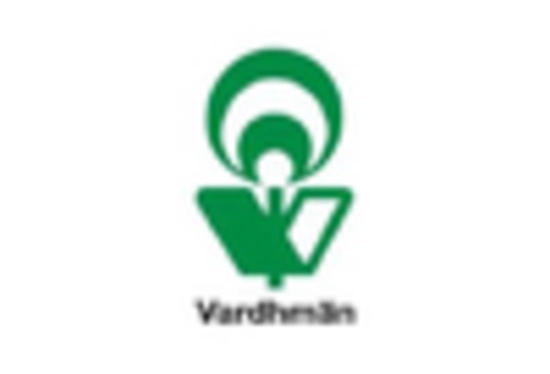Technological Innovations
Technological advancements play a pivotal role in shaping the Cotton Yarn Market. Innovations in spinning technology and dyeing processes have led to increased efficiency and reduced waste. For instance, the introduction of automated spinning machines has improved production rates while maintaining high-quality standards. Market data suggests that the adoption of such technologies could reduce production costs by up to 15%, making it more feasible for manufacturers to compete in a price-sensitive market. Furthermore, advancements in digital textile printing are enabling more intricate designs, appealing to a broader consumer base. Thus, the integration of technology is likely to be a key driver of growth in the Cotton Yarn Market.
Sustainability Initiatives
The Cotton Yarn Market is increasingly influenced by sustainability initiatives. Consumers are becoming more environmentally conscious, leading to a rising demand for organic and sustainably sourced cotton yarn. This shift is reflected in market data, indicating that the organic cotton yarn segment is projected to grow at a compound annual growth rate of approximately 10% over the next five years. Brands are responding by adopting eco-friendly practices, which not only enhance their market appeal but also align with regulatory pressures for sustainable production. As a result, companies that prioritize sustainability in their cotton yarn offerings are likely to gain a competitive edge, thereby driving growth in the Cotton Yarn Market.
Expanding Home Textile Sector
The Cotton Yarn Market is significantly impacted by the expanding home textile sector. With a growing interest in home decor and furnishings, the demand for cotton yarn in products such as curtains, upholstery, and bed linens is on the rise. Market data reveals that the home textile segment is projected to account for a substantial share of the cotton yarn market, with an expected growth rate of around 7% over the next few years. This expansion is driven by consumer preferences for natural and durable materials in home textiles. As a result, manufacturers focusing on high-quality cotton yarn for home applications are likely to benefit from this trend, further propelling the Cotton Yarn Market.
Rising Demand for Fashion Textiles
The Cotton Yarn Market is experiencing a surge in demand for fashion textiles, driven by changing consumer preferences. As fashion trends evolve, there is a notable shift towards natural fibers, with cotton yarn being favored for its comfort and breathability. Market data indicates that the demand for cotton yarn in the apparel sector is expected to increase by approximately 8% annually. This trend is further fueled by the rise of sustainable fashion, where consumers seek products that are both stylish and environmentally friendly. Consequently, manufacturers who can adapt to these trends and offer innovative cotton yarn solutions are likely to thrive in the competitive landscape of the Cotton Yarn Market.
Emerging Economies and Market Access
The Cotton Yarn Market is witnessing growth opportunities in emerging economies, where rising disposable incomes and urbanization are driving demand for cotton products. As these economies develop, there is an increasing preference for cotton yarn in both apparel and home textile applications. Market data suggests that regions such as South Asia and Africa are expected to see a significant uptick in cotton yarn consumption, with growth rates potentially exceeding 9% in the coming years. This trend presents a lucrative opportunity for manufacturers to expand their market access and cater to the evolving needs of consumers in these regions. Thus, the dynamics of emerging economies are likely to be a crucial driver for the Cotton Yarn Market.


















Leave a Comment